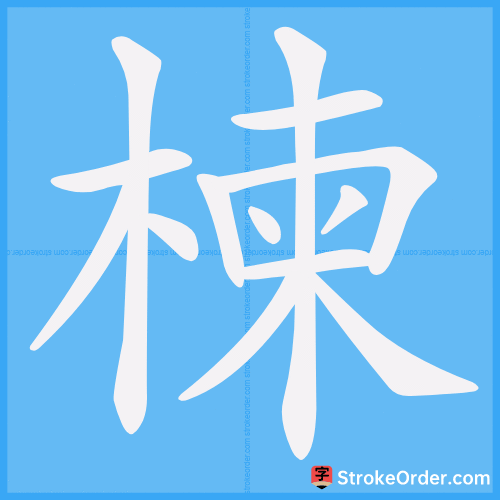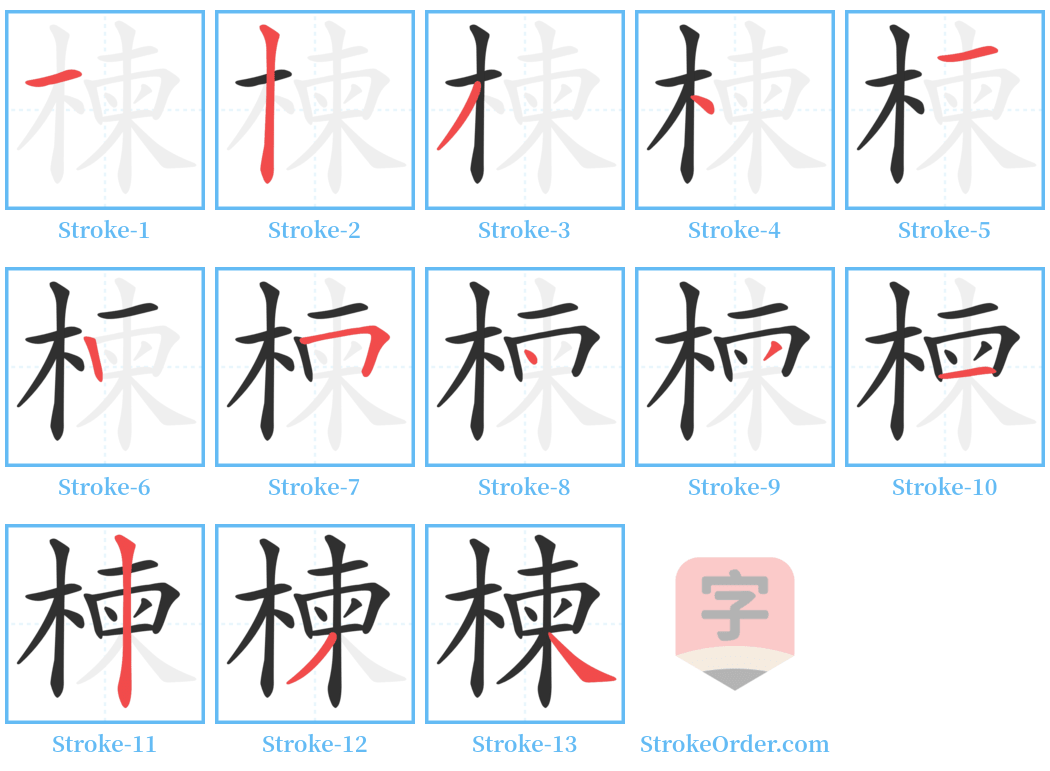楝 Stroke Order
Animated Stroke Order of 楝

Stroke Order Diagrams for 楝

Step-by-Step Handwriting Guide for 楝

Learn to Write Chinese Characters with Video Tutorials
Watch the video of writing the Chinese character "楝", learn the correct stroke order (笔顺) of the character "楝", and master the standard way of writing the character "楝".
Free Printable Handwriting Practice with Stroke Order: 楝
Printable Writing Practice Worksheet of "楝" in Portrait Orientation (Tian Zi Ge)

Printable Writing Practice Worksheet of "楝" in Landscape Orientation (Tian Zi Ge)

Information of 楝
Pinyin
liàn
Radical
木
Strokes
13 strokes
Usage
★★★★
Definition
Melia japonica
楝
[liàn]
1. A type of tree. The楝 tree, also known as苦楝 (bitter楝). It belongs to the楝科 family and is a deciduous tree. The leaves are small, oval or elliptical, with dull serrated edges. It has conical flower clusters that are pale purple. The fruit is short, oval-shaped or nearly spherical. The oil from the seeds can be made into paint, lubricants, etc.; the flowers can be distilled for essential oils; the bark, leaves, and fruit can be used in medicine; the wood is solid, easy to work with, and is used to make furniture, musical instruments, boats, agricultural tools, and for construction.
In the "Shuowen Jiezi•Mubu," it states: "楝, a type of wood." In the "Guangyun•Xianyun," it mentions: "楝, a type of wood, the鵷鶵 (a type of bird) eats its fruit." In the "Huainanzi•Shize," it notes: "In July, the官庫 (official warehouse) has the楝 tree." From Song dynasty poet Liu Tiandi's work "Yumeiren•Chun Can Nian Yuan": "After thanking the roses, I see the楝 flowers flying again." In "Qingchao Yeshi Daguan•Qing Gong Yihui•Qianqing Gong Ci Baishou," it describes: "In spring, the太液 pond ripples, as the楝 blooms under the warm sun."
2. The楝 tree (English: chinaberry). Commonly known as “苦楝子” (bitter楝 seeds). It is a fast-growing small tree native to Asia. It has large, pinnate compound leaves, fragrant purple flowers that grow in clusters, and smooth, yellow fruit.
Input Method for 楝
Pinyin
lian4
Wubi
sgli|sslg
Cangjie
ddwf
Zhengma
fflk
Four Corner
45996
Unicode
U+695d
Same Pronunciation Characters